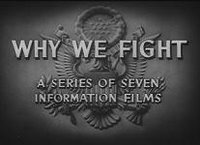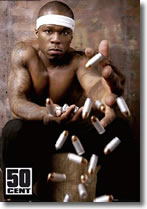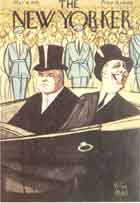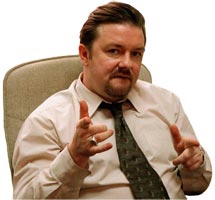Eugene Jarecki's latest is an admirable failure of all-too-epic proportions

"Until the latest of our world conflicts, the United States had no armaments industry... [but] we have been compelled to create a permanent armaments industry of vast proportions. Added to this, three and a half million men and women are directly engaged in the defense establishment. We annually spend on military security more than the net income of all United States corporations. This conjunction of an immense military establishment and a large arms industry is new in the American experience. The total influence-economic, political, even spiritual-is felt in every city, every state house, every office of the Federal government. We recognize the imperative need for this development. Yet we must not fail to comprehend its grave implications. Our toil, resources and livelihood are all involved; so is the very structure of our society. In the councils of government, we must guard against the acquisition of unwarranted influence, whether sought or unsought, by the military-industrial complex. The potential for the disastrous rise of misplaced power exists and will persist."
-Eisenhower (
Farewell Address, 1961)
Eugene Jarecki's new film,
Why We Fight, focuses on Eisenhower's farewell warning about the dangers of a military-industrial complex and paints a convinci

ng picture of how that phrase has come to aptly describe the current political situation in America. Jarecki brings a considerable amount of information to the table, but the film fails to pack a cinematic punch and
Why We Fight ends up being more like a better-than-average
History Channel special than a sophisticated piece of political cinema.
The primary reason for
Why We Fight's cinematic fumbling is that it takes on too much; in addition to "exploring a half-century of American wars" and "the economic, political, and spiritual" forces that drive America to fight, the film also focuses on seven diverse Americans, 16 prominent experts, as well as Eisenhower himself. By taking on so much, Jarecki fails to adequately address the subtler nuances of his topic and the wealth of facts and opinions he employs often provoke more questions than they illuminate.

Because of its relationship to The Eisenhower Project, the film was screened at Columbia (Eisenhower was president of Columbia from 1948 to 1953) the night before its American theatrical release. Free tickets were given to the Political Science Department and Jarecki gave a Q&A session following the film. Taking its title from a series of 1944 Frank Capra propaganda films,
Why We Fight won the Grand Jury Prize at last year's Sundance and features John McCain, William Kristol, Gore Vidal, Richard Perle, Dan Rather and others. In addition to plentiful footage of bombs, presidents, fat Americans, and unhappy Middle Easterners the film also features the personal stories of seven normal Americans who have played different roles in American militarism.
 Why We Fight
Why We Fight could succinctly be described as 'the thinking man's
Fahreneheit 9/11"; Jarecki introduced the film by acknowledging that we are all "tired of the shouting match" and offered his film as an attempt to stimulate dialogue. Although
Why We Fight was considerably less of a cinematic shout than Michael Moore's contribution on the same subject, it did not, in my opinion, bring much more to the table. Both films used ample historical and contemporary footage, as well as an abundance of facts and "educated opinions"; likewise, both films made similar points, although Janecki's film was much more sophisticated and subtle and a lot less sensationalized and self-righteous.
In an
interview with the BBC, Jarecki made the following comment comparing
Why We Fight to his previous film,
The Trials of Henry Kissinger:"It really followed on from the experience we had making
The Trials of Henry Kissinger... I thought I had made a film about US foreign policy but the audiences seemed to be most interested in talking about Henry Kissinger the man. To me, that felt politically impotent because the forces that are driving American foreign policy are so much larger than any one man. With the next film I wanted to go further - I didn't want to stop at an easy villain or a simple scapegoat. I wanted to have a much more holistic approach that really took on the whole system."
Taking on the whole system is a flaw that the

overwhelming majority of contemporary "political" movies share. By attempting to tackle an issue as big as "why we fight" in 98 minutes, the film is essentially defanged of all substantial political bite. Although
Why We Fight is certainly far more nuanced than a righteous shouting party like
Fahrenheit 9/11, it lacks incisiveness of a more moderate (in scope, not politics) film such as Errol Morris's
The Fog of War. Why We Fight is like a non-fiction counterpart to films like
The Motorcycle Diaries and
The Edukators (more on that later), which Richard Porton insightfully criticizes in his article "
A Failure of Nerve." Like both films,
Why We Fight is full of banal aestheticism (missiles against a striking blue sky, pleasingly-composed panoramas of large weapons) and cliched americana (fat Midwesterners, pick-up trucks, diners, fireworks, etc). Porton describes such films as aesthetically and intellectually impoverished and laments the absence of a "radical narrative political cinema, with no concessions to either liberal pabulum or crude agit-prop" (an absence which he sees as being thrown into startling relief by the recent re-release of Gillo Pontecorvo’s 1965
The Battle of Algiers).
Although
Why We Fight is appreciably more complex than either
The Edukators or
The Motorcycle Diaries, l

ike those films it does more to relieve bourgeois guilt than to stimulate dialogue or deal with Big Questions. Jarecki does indeed tackle the "whole system" -and does it as much justice as can be expected in 98 minutes- but his film is less provocative than one might hope. While he does shed considerable light on the military-industrial complex, his approach turns all criticism outwards: toward the president, the vice president, the arms manufacturers, the congress. Jarecki corrects his former mistake of fixing the weight of America's faults on one individual and instead diffuses criticism into a holistic indictment of The System. However, this indictment is more comforting than one might expect, since Jarecki never takes the step of forcing us to question our role in The System and with whom agency lies. Rather, like Wilton Sekzer, the be

reaved father who requests that his son's name be placed on a bomb headed for Iraq, we can sit back and lament our position as deceived cogs in an imperial machine. 50 Cent's comment in a recent
Guardian interview is perhaps a good indicator of the reaction such a film provokes:
"Yeah... the war is a business. You have to think about how much money is being made by companies who manufacture weapons... [when asked if this makes him angry] Nah, I just acknowledge it."
Th

e success of films like
Battle of Algiers and
The Fog of War, in my opinion at least, lies in their moderate scope: by focusing on one man (Robert McNamara) or one war (the Algerian revolution), such films are able to bring questions of agency and morality to the fore, rather than leaving them submerged under grand indictments of the status quo. Both films are relatively limited in their subject matter, but both have implications that reach far beyond the time and place their modest running times constrain them to (this was demonstrated by the
screening of Battle of Algiers in Pentagon a few months after the invasion of Iraq) . Jarecki is clearly a brilliant man; he is painfully eloquent and exceptionally well-versed in his subject (as he demonstrated in the Q&A), but cinema, at least "political" cinema, is often better suited to allegory than comprehensiveness, and attempting comprehensiveness on a topic as large as "why we fight" is asking for admirable failure at best.
(Pictures: Richard Avedon, Eisenhower; General Dwight Eisenhower giving orders to American paratroopers in England, June 6, 1944; Frank Capra film still; Eugene Jarecki; Why We Fight film still; Wilton Sekzer, Why We Fight film still; 50 Cent; WWII poster)
 Hark Tradition: Historical Predictions for Bush's Address
Hark Tradition: Historical Predictions for Bush's Address














